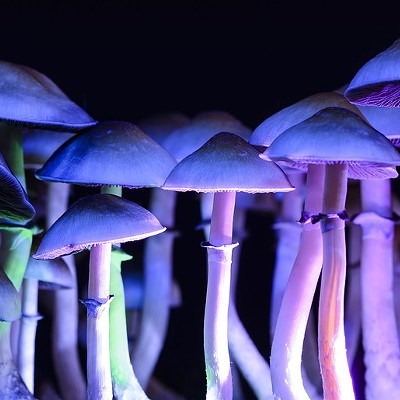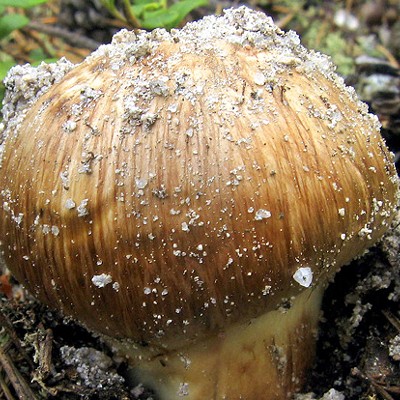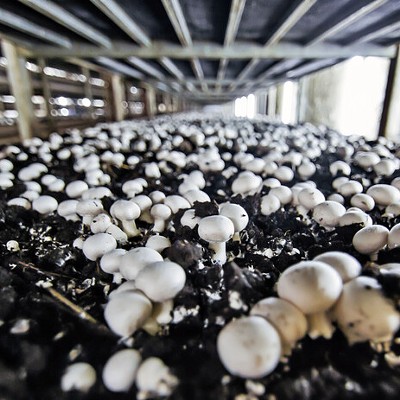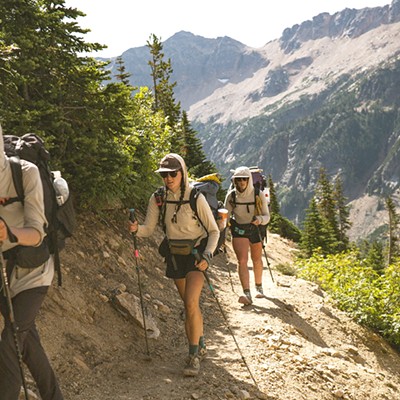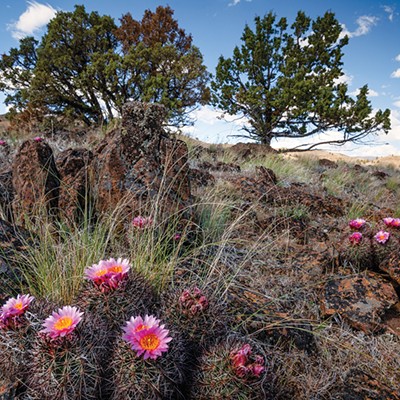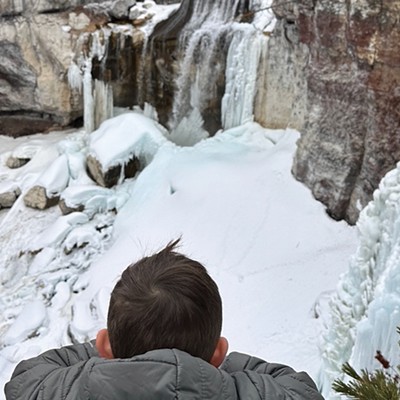For a simple autumn meal, sear matsutake mushrooms in a hot cast iron pan seasoned with canola oil and salt. Finish up with a sprig of thyme and some butter. The ingredients are straightforward and easily purchased at your favorite grocery store. Collecting the mushrooms could take a bit more work.
Fortunately, the matsutake mushroom hunting season is currently underway in Central Oregon, a season that, according to Danny Weinrich, special forest products coordinator for the Crescent Ranger District, has drawn a "larger-than-usual" number of license applications. "The Crescent Ranger District sold 151 mushroom permits on the first day that the season opened this year," he said. "Last year we sold 166 permits in total for the entire season."
Jean Nelson-Dean, public affairs officer for the Deschutes National Forest, explained that the season began on Tuesday, Sept. 8 and will end on Nov. 8. "Four national forests in Oregon — the Deschutes, Fremont-Winema, Umpqua, and the Willamette — are included in this season for the taking of the matsutake mushroom," she said.
A commercial permit is required for those seeking the delicacy and is available at each of the four district offices during regular business hours.
"Permits cost $200 for the 62-day season or $100 for a consecutive 31-day, half-season permit," noted Nelson-Dean. "An $8 per day, three-day minimum, permit can also be bought that does not require picking days to be consecutive."
Nelson-Dean reminded harvesters that they must be 18 or older and have valid identification to purchase a permit. If the cost of the permit seems high, it is worth noting that some harvested mushrooms sold around the world, especially in Japan some have been known to sell for up to $1,000 per pound.
Weinrich said that this year's mushroom season is "typical." It benefits from moisture and is hurt by dry conditions and early frosts. "In the last week when it was dry, it was harder to find them," he noted. "But with some wetting, and cooler, but not frost weather, we should be seeing more mushrooms."
To find mushrooms, Weinrich explained that matsutakes tend to grow concealed under duff, the dead plant material on the forest floor of coniferous forests from Northern California to British Columbia.
"They tend to like areas with western hemlock, lodgepole pine, Douglas-fir, noble fir, Shasta red fir, sugar pine, and ponderosa pine," said Weinrich. "To find matsutake mushrooms, look for telltale bumps or cracks in the forest duff among the roots of trees."
Weinrich emphasized that care must be taken by harvesters, gently searching for the mushrooms with their fingers. If harvesting tools are used, they must be less than 18-inches long and a half-inch wide, similar to a weed popping tool.
"To properly harvest matsutake mushrooms and not impact future harvests, people should try to harvest by hand and gently rock the mushroom back and forth to remove it," he added.
According to a Japanese mushroom hunting guide, the highest grade is given to mushrooms that have an even plumpness and measure six inches in length. More important than size, however, is to make sure that the cap has not yet opened. The Japanese say to choose those that look like the male organ, instead of an umbrella.
Weinrich cautions harvesters to always cover the hole in the duff made during harvest in order to preserve the mycelium that will produce next year's crop. "No raking or ground disturbance is allowed for harvesting of matsutake mushrooms," he added.
For eating, Nelson-Dean suggested an even simpler recipe for enjoying the seasonal treat. "A popular way to make them is to broil them for a few minutes on each side and add a bit of rice wine vinegar or soy sauce either before or after broiling," she noted.

